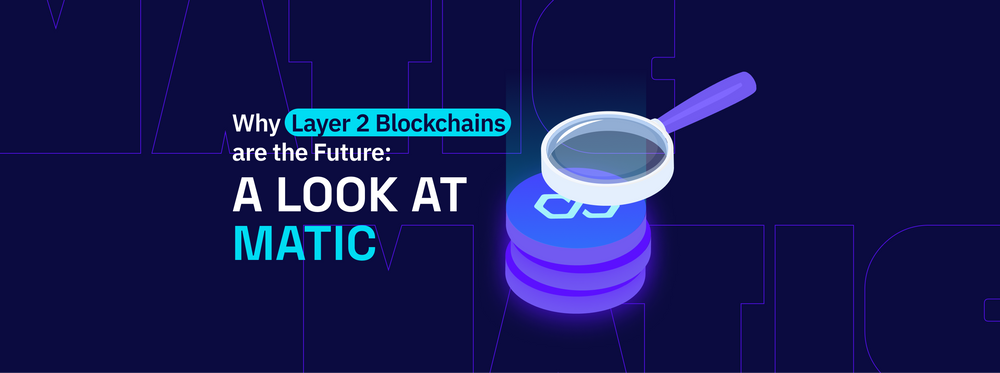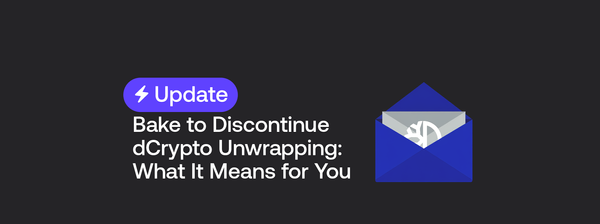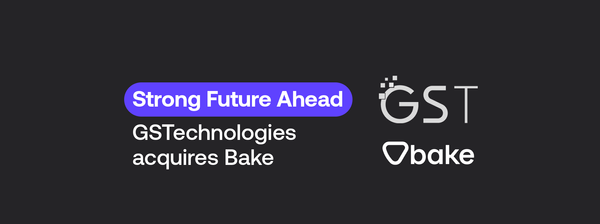A Look at Polygon (MATIC): Why Layer 2 Blockchains are the Future
A layer 2 blockchain is a blockchain built on top of an existing blockchain (referred to as the layer 1 blockchain such as bitcoin, Ethereum or DeFiChain). It is designed to improve scalability and speed by offloading some of the processing from the layer 1 blockchain to the layer 2 blockchain.
One example of a layer 2 blockchain is Polygon, which is built on top of the Ethereum blockchain. Polygon allows for faster and cheaper transactions, which makes it attractive for use cases such as decentralized finance (DeFi) and gaming.
Like the internet and credit cards in the past, layer 2 blockchains have faced initial resistance due to a lack of understanding or skepticism about their usefulness. However, as more people learn about the benefits of layer 2 blockchains and start using them, it's likely that they will become an even more integral part of the blockchain ecosystem.
What are the benefits of layer 2 blockchains?
One of the main benefits of layer 2 blockchains is the improved scalability. The more people use a blockchain, the more congested it becomes, leading to slower transaction speeds and higher fees. This can be a major barrier to adoption, as it limits the types of applications and use cases that can be built on the blockchain.
Layer 2 blockchains address this issue by offloading some of the processing from the layer 1 blockchain to the layer 2 blockchain, thereby increasing the number of transactions that can be processed in a given time frame. A layer 2 is a separate blockchain that extends the mainnet while inheriting the security guarantees of its mother chain. This makes it possible to build more complex and widely-used applications on the blockchain, which in turn drives adoption and brings us closer to the vision of a decentralized web3.
In addition to improved scalability, layer 2 blockchains also offer lower fees. Because they are able to process more transactions at a lower cost, users can save money on transaction fees when using a layer 2 blockchain. This is especially important for applications that require numerous microtransactions, such as DeFi projects or online marketplaces.
Despite the benefits of layer 2 blockchains, some people are concerned about the security of these systems. It's important to note that layer 2 blockchains are built on top of layer 1 blockchains, which means that they inherit the security of the underlying blockchain. Furthermore, layer 2 blockchains often use additional security measures to protect against attacks and ensure the integrity of the system.

One of the most exciting aspects of layer 2 blockchains is the potential to expand the use cases for blockchain technology. By increasing scalability and reducing fees, layer 2 blockchains make it possible to build a wider range of applications on the blockchain, such as prediction markets, decentralized exchanges, and even video games. This opens up a whole new world of possibilities for decentralized applications and could lead to the creation of entirely new industries.
What is Polygon?
Polygon, also known as MATIC, is a layer 2 blockchain for Ethereum that aims to improve the scalability of the Ethereum mainnet by using different scaling technologies. It functions as an "internet of blockchains" that connects Ethereum-compatible blockchains and uses a modular "security-as-a-service" approach that can leverage Ethereum's existing security or use its own pool of professional validators. This allows for more transactions to be processed on the network, ultimately leading to faster, cheaper, and more efficient transactions.
One of the ways Polygon is working to improve scalability on Ethereum is through its different scaling solutions. These include:
- Polygon PoS: Its Commit Chain, a Proof-of-Stake EVM-compatible sidechain is already live. This solution allows for faster and more efficient transactions by using a Proof-of-Stake mechanism to validate them, instead of the more energy-intensive Proof-of-Work mechanism used by Ethereum.
- Polygon Miden: A zero-knowledge rollup based on STARK. This allows for increased privacy on the network by using zk-SNARKs to validate transactions without revealing their details.
- Polygon Hermez: An open-source zk-rollup. This is similar to Polygon Miden, but is designed to be more accessible and user-friendly.
- Polygon Avail: A standalone chain focused on data availability. This solution allows for more storage on the Ethereum network, allowing more data to be stored on-chain.
- Polygon Zero: Another zk-rollup chain that aims to improve privacy on the network.
- Polygon Nightfall: A privacy-focused rollup chain that uses zero-knowledge proofs to keep transactions private.
All of these solutions aim to provide various ways to scale Ethereum and improve the performance and capabilities of the network. They also bring about a lot of benefits for users such as lower transaction cost, faster and more efficient transactions and more privacy for the users. With Polygon, Ethereum can become a more versatile, accessible and efficient blockchain, which can attract a lot more users and use cases that were earlier not possible on the network.
What is Polygon trying to build and what problem(s) are they solving?
To address the scalability issue, Polygon also introduced a new solution called zero knowledge Ethereum Virtual Machines (zkEVM), which is designed to significantly reduce layer 1 Ethereum network costs by roughly 90% while vastly increasing throughput capacity and inheriting the Ethereum blockchain's security.
One of the key benefits of zkEVM is that it works seamlessly with all existing smart contracts, developer tools, and wallets, thanks to the use of advanced cryptography called zero-knowledge proofs. This makes it perfectly suited for developing enterprise applications, innovative gaming technologies, and non-fungible tokens (NFTs).
In addition to its scalability benefits, zkEVM is also expected to launch on Ethereum sometime in early 2023 and has recently been open sourced to the public for review. It's worth noting that while the code is publicly available to view, it cannot be used, modified, or shared as it was not published under an open-source code license.

There are several projects and solutions that are contenders for building an EVM-equivalent zkEVM, each with its own core technology, benefits, and limitations. Polygon's zkEVM is an exciting development in the world of blockchain technology and has the potential to significantly improve scalability and reduce costs for Ethereum users. As more people learn about the capabilities of zkEVM, it's likely that we will see it become an increasingly important part of the blockchain landscape.
What is a zkEVM, and how does it work?
The Ethereum Virtual Machine (EVM) is the execution environment for running smart contracts on the Ethereum blockchain, but it's not natively equipped to handle zero-knowledge proofs, which are a key aspect of privacy-preserving technologies. zkEVM addresses this problem by providing a zero-knowledge-compatible and verifiable virtual machine that guarantees the correctness of programs, operations, and inputs and outputs.
One of the main advantages of zkEVM over the traditional EVM is that it allows dApps to scale while maintaining privacy and security. Zero-knowledge proofs provide a way to prove that a statement is true without revealing any additional information, which allows for private and secure transactions. The use of zk-proofs in zkEVM also enables a more efficient use of resources, making it possible to process more transactions per second.
zkEVM is not only a refactoring of the EVM, but also a refactoring of the entire state transition of the Ethereum network using zero-knowledge proof techniques. This can be a challenging task, as the original design of the EVM did not anticipate the need for zkEVM, but Polygon's team have managed to overcome this challenge by developing a solution that is backwards-compatible and optimized for privacy-preserving technologies.
In conclusion, Polygon's zkEVM is a powerful solution for scaling and privacy for dApps on Ethereum. The use of zero-knowledge proofs in the EVM allows for a more efficient use of resources and enables private and secure transactions. This holy grail of scaling on Ethereum is being able to do more transactions, at lower cost and with more privacy, making it possible to process more transactions per second without sacrificing security. The future is promising for zkEVM and the Ethereum ecosystem as a whole.
For individuals who hold MATIC, Bake presents a viable option for earning Staking rewards while benefiting from the platform's transparency and trustworthiness. For those looking to capitalize on the growth potential of Polygon, Bake's MATIC staking product is a compelling option to consider.

DISCLAIMER: Please note that the information on this blog and in any articles posted on this blog is for general information only and should not be relied upon as financial advice. Cake Pte. Ltd., Bake, UAB, and its affiliates (the “Cake Group”) are not licensed financial advisers. You may wish to approach your own independent financial advisor before making any decision to buy, sell or hold any product and/or digital assets mentioned in this blog.
Any views, opinions, references, assertions of fact and/or other statements are not necessarily the views held by the Cake Group. The Cake Group disclaims any liability whatsoever that may arise out of or in connection with such statements. Always do your own research before investing in any financial assets and consult a qualified financial advisor if necessary.




